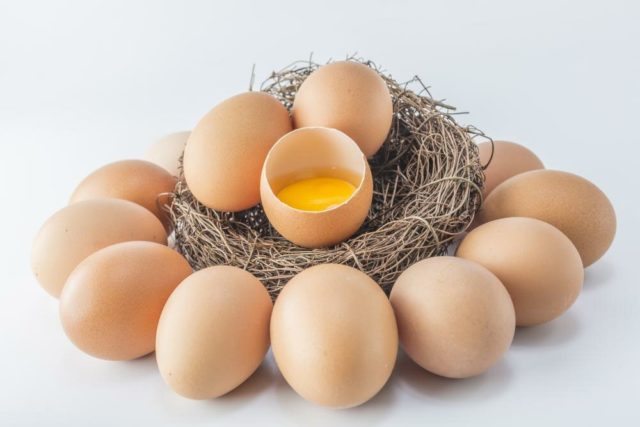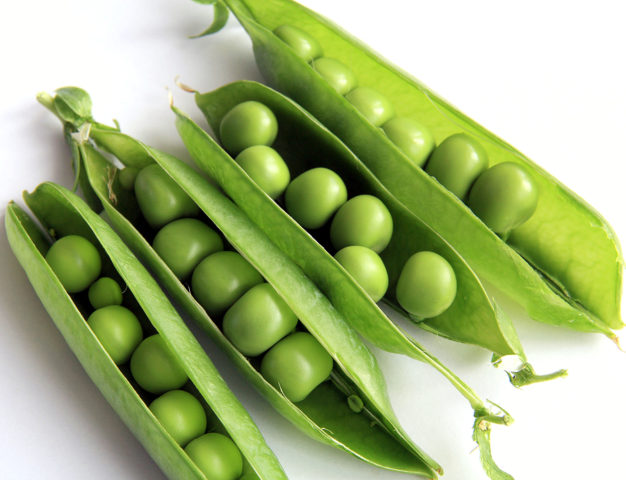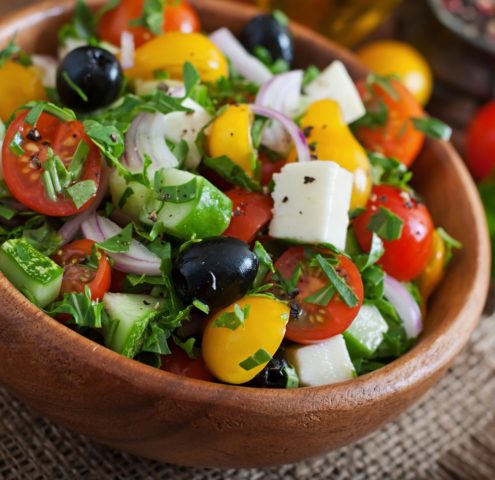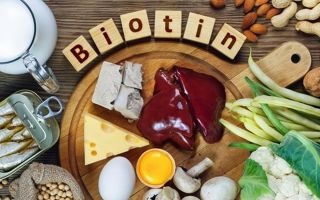Content
Foods containing biotin can be found in almost all common dishes on the table. With a balanced diet, a sufficient amount of vitamin enters the body. Biotin is required in small quantities, and the need for its use cannot be ignored - it affects many important functions in the body. Most biotin is found in animal products.
What foods contain the vitamin biotin
Biotin or vitamin H, B7 - belongs to the group of water-soluble active substances. It is characteristic for it to independently synthesize in the body of each person in the intestine with the participation of certain bacteria. In this case, the vitamin does not accumulate and is excreted in the urine.

Important functions of biotin include:
- the formation of fatty acids;
- regulation of salt metabolism;
- lowering blood sugar levels;
- influence on the activity of the sweat glands;
- stimulation of the function of the sex glands in men and women;
- has a positive effect on the nervous system;
- participates in metabolic processes with carbohydrates.
Usually, a normal diet is sufficient to get the required amount of biotin, but sometimes the need for it increases. This may be due to the use of antibiotics, some bad habits, diabetes. It is also necessary to monitor the level of biotin for people working in hazardous industries and athletes.
Biotin-rich foods include certain organ meats, dairy products, eggs, nuts, legumes, yeast, vegetables, and mushrooms.
Foods high in biotin
Biotin can be obtained not only through synthesis. Most of the vitamin is found in some foods of animal and plant origin.
In plant foods, biotin is in a free state. The highest concentration of the vitamin is found in beef and pork liver, some soy products, chicken yolk, peas, and many grains.
Soybeans
Soy is a legume. It is most popular among oilseeds and pulses. Soy contains a high content of protein and valuable nutrients. This allows you to actively use it as a substitute for meat and dairy products. In addition to biotin, soy contains vitamins B, A, E, PP, choline and folic acid. Soy is also rich in minerals - potassium, calcium, magnesium, sulfur, iron, phosphorus and molybdenum. Soy has the ability to absorb various tastes and aromas, so pates, sausages, stews, butter, milk, sweets are prepared from it.
Chicken eggs

Chicken eggs are rich in protein, which is essential for the growth and development of the body. It is one of the few foods that are completely absorbed by the digestive system.Eggs contain amino acids, vitamins, minerals. Among them are fluorine, manganese, chromium, phosphorus, sodium, potassium and calcium. The daily consumption of chicken eggs affects the following processes:
- synthesis of vitamin D;
- strengthening of bone tissue;
- fighting fatigue and bad mood;
- counteraction to many pathologies, including oncology and heart diseases;
- anti-sclerotic action;
- nutrition of the brain;
- regulation of sex hormones.
The composition of the eggshell is no less interesting: iron, fluorine, silicon, molybdenum and many other minerals. In total, experts have more than 28 elements.
Oatmeal
Before it appears on store shelves, oatmeal goes through several stages of preparation - steaming, peeling, grinding. It is used to create many dishes: soups, mashed potatoes, viscous cereals, casseroles, cookies. In large quantities, oatmeal contains antioxidants, as well as minerals - calcium, phosphorus, iron. Of the vitamins in cereals, there is a high amount of PP, E, group B, including biotin. Eating oatmeal helps to reduce cholesterol and blood sugar levels, improves digestion, and improves the condition of the skin and hair.
Powdered milk
It is known that the composition of milk powder is almost the same as that of ordinary milk. But the only difference is that the concentration of fatty acids in it is slightly lower. Milk powder contains amino acids (saturated fatty and essential). Other components include lactose, iodine, iron, potassium, calcium, copper, magnesium.
Milk powder contains B vitamins and biotin, including A, C, D, PP. Thus, it is recommended for anemia, cardiac pathologies, in order to prevent diabetes, osteoporosis. Nutritionists have found that milk powder is absorbed somewhat better than simple milk, so it can be used by people with digestive tract problems.
Peas

Peas are legumes. It is believed to have been used as food since the Stone Age. It differs from other legumes in terms of protein and fiber concentration - there are much more of them in peas, therefore it is popular with athletes and vegetarians.
Of course, fresh peas are of great benefit to the body, however, even after heat treatment, they contain a lot of vitamins E, B2, B6, B1, A, C and biotin. Of the minerals, a high content of zinc, iron, potassium, magnesium, sodium and others is noted. At the same time, the calorie content of peas in any form is quite low, which people who control their weight are happy to use.
Rice
Rice is a grain with a high content of biotin, other B vitamins. This allows rice to be used for energy and muscle building. The high content of PP vitamin and some minerals has a beneficial effect on the digestion process. Rice is especially useful for people with gastritis and peptic ulcer disease, since it coats well the gastric mucosa, promoting rapid healing. Rice helps regulate cholesterol and sugar, removes toxins and toxins, prevents cancerous growths, and promotes fast satiety. The culture is rich in sulfur, chlorine, sodium, potassium, calcium, aluminum, copper, silicon.
Wheat
Wheat is also a cereal crop. It has many varieties and classifications, but more often it is subdivided into hard and soft varieties. Between themselves, they have a lot in common, but a number of features distinguish them from each other.
Grains are rich in protein, carbohydrates and fats. Wheat also contains many minerals: magnesium, potassium, calcium, boron, vanadium, silicon, chromium and zirconium in the composition.Vitamin H is found in many wheat products, but germinated grains are more beneficial.
Barley

Barley is considered an ancient culture. Its benefits are due to the high content of biologically active substances - minerals, vitamins, dietary fiber. The consumption of this cereal has a positive effect on the digestive tract, supports the optimal intestinal microflora. Culture prevents the development of cancer, joint pathologies, has anti-inflammatory properties, strengthens the body's immunity. The cereal contains vitamins, including biotin. Of the minerals in barley grains, iodine, copper, iron, potassium, calcium and other substances are present.
Chicken's meat
Chicken meat is considered a dietary product. Eating chicken in moderation can keep your body in great shape. Vitamins are represented by group B, including biotin, as well as A, C. Of the mineral components in chicken meat there is zinc, chromium, magnesium, selenium, phosphorus, chlorine. It is worth noting that breast meat is different from other parts of chicken. It has no cholesterol and very little fat. This allows you to use meat broths during rehabilitation after illness, various injuries.
Biotin content table
The table contains the foods that contain the most biotin.
|
Products |
Content in 100 g |
Daily requirement |
|
Soybeans |
60 mcg |
120% |
|
Chicken egg |
20.3 μg |
40% |
|
Oatmeal |
20 mcg |
40% |
|
Split peas |
19.5 mcg |
39% |
|
Rice |
12 mcg |
24% |
|
Wheat |
10.4 μg |
21% |
|
Chicken's meat |
10 mcg |
20% |
|
Powdered milk |
10 mcg |
20% |
|
Green peas |
5.3 μg |
10% |
Rules for the use of foods with biotin
It should be remembered that not all types of food can retain biotin. Least of all benefits from vitamin H in marinades, preservation. Heat treatment significantly reduces the amount of biotin. The vitamin composition is reduced when cooking in aluminum dishes and when exposed to direct sunlight.

The most correct way to cook food is in a double boiler or oven using foil. Also remember to prepare biotin-rich foods in the form of fresh salads.
Conclusion
Biotin is found in every kitchen. Vitamin affects all important functions in the body. It affects metabolism, is recommended for diabetes mellitus, regulates cholesterol levels, improves the condition of the skin, hair and nails. Vitamin is found in many products, but it is advisable not to overuse heat treatment when cooking.

